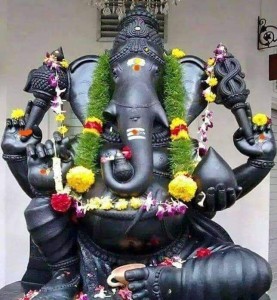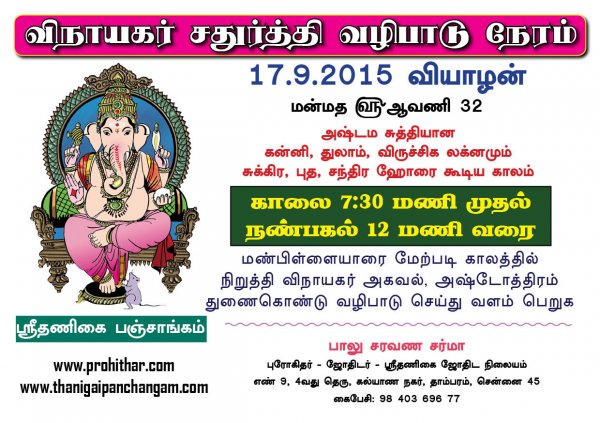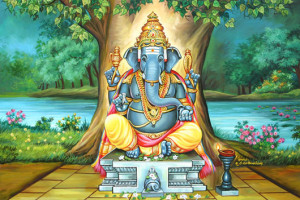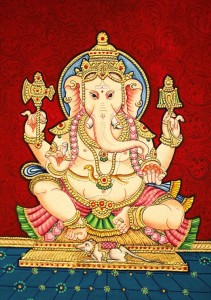P.J.
0
Vinayaka Chaturthi Vrata Puja Vidhanam – 2015
Sri Vinayaka Chathurthi is on 17 th September 2015

Sri Ganesha or Sri Ganapati is an extremely popular and powerful God. He is called Vighneshvara or Vighnaharta, the Lord of and destroyer of obstacles. People mostly worship Him asking for siddhi, success in undertakings, and buddhi, intelligence. He is worshipped before any venture is started. He is also the God of education, knowledge and wisdom, literature, and the fine arts.
Sri Ganesha Chaturthi is the Hindu festival celebrated in honour of the god Ganesha, the elephant-headed remover of obstacles and the god of beginnings and wisdom.
The festival, also known as Vinayaka Chaturthi, is observed in the Hindu calendar month of Bhaadrapada, shukla chaturthi.
Audio Recording by : Sri V. Sriram Ghanapatigal
In case of difficulty or break ups in audio streaming, please download the entire mp3 to your local drive and play.
Audio Files :
Sri Vinayaka Chathurthi is on 17 th September 2015

Sri Ganesha or Sri Ganapati is an extremely popular and powerful God. He is called Vighneshvara or Vighnaharta, the Lord of and destroyer of obstacles. People mostly worship Him asking for siddhi, success in undertakings, and buddhi, intelligence. He is worshipped before any venture is started. He is also the God of education, knowledge and wisdom, literature, and the fine arts.
Sri Ganesha Chaturthi is the Hindu festival celebrated in honour of the god Ganesha, the elephant-headed remover of obstacles and the god of beginnings and wisdom.
The festival, also known as Vinayaka Chaturthi, is observed in the Hindu calendar month of Bhaadrapada, shukla chaturthi.
Audio Recording by : Sri V. Sriram Ghanapatigal
In case of difficulty or break ups in audio streaming, please download the entire mp3 to your local drive and play.
Audio Files :
- Introduction:
| Download MP3 - I -Vigneswara Puja:
| Download MP3 - II- Siddhi Vinayaka Puja :
| Download MP3 - III- Ekavimshati Patra, Pushpa, Ashtotra Puja :
| Download MP3 - IV- Uttaranga Puja:
| Download MP3
Hara Hara Sankara Jaya Jaya Sankara
http://vedabhavan.org/vinayaka-chaturthi-vrata-puja-vidhanam-2015/
http://vedabhavan.org/vinayaka-chaturthi-vrata-puja-vidhanam-2015/




